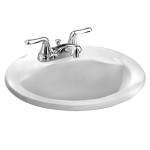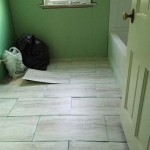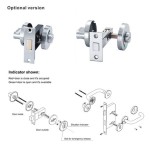Can Lights Above Bathroom Vanity
Bathroom vanities are crucial spaces for personal grooming, requiring adequate and targeted illumination. Can lights, also known as recessed lights, offer a sleek and effective solution for bathroom vanity lighting. Their versatility, directional capabilities, and space-saving design make them a popular choice for modern bathrooms.
Placement and Spacing
Proper placement and spacing are essential for maximizing the effectiveness of can lights above a bathroom vanity. Ideally, they should be positioned to minimize shadows on the face. A common approach is to install two can lights flanking the mirror, approximately 30-36 inches apart, centered above the mirror. This positioning provides balanced illumination, reducing shadows that can interfere with tasks like applying makeup or shaving.
The distance between the can lights and the mirror also plays a significant role in lighting effectiveness. Placing them too close can create glare, while positioning them too far away may result in insufficient light. A distance of 24-36 inches from the mirror is generally recommended.
Color Temperature and Brightness
Selecting the appropriate color temperature and brightness is crucial for creating the desired ambiance and functionality in the bathroom. Color temperature is measured in Kelvin (K). For bathroom vanities, a color temperature between 3000K and 4000K is often preferred. This range offers a balance between warm and cool tones, providing a neutral and flattering light for grooming tasks.
Brightness, measured in lumens, should be sufficient for clear visibility without being overwhelming. A total output of 1500-2000 lumens for a standard-sized vanity is typically adequate. Using dimmable can lights allows for adjustable brightness levels, providing flexibility for different needs and times of day.
Types of Can Lights
Various can light options are available, each with its own benefits and drawbacks. Understanding these differences can help homeowners make informed decisions when selecting can lights for their bathroom vanity.
IC-Rated vs. Non-IC Rated: IC-rated can lights are designed for direct contact with insulation, making them suitable for installations where the housing comes into contact with attic insulation. Non-IC rated lights require a clearance around the housing to prevent overheating.
New Construction vs. Retrofit: New construction can lights are installed during the building process, before the ceiling is finished. Retrofit can lights are designed for existing ceilings and are typically easier to install.
LED vs. Halogen vs. Incandescent: LED can lights are the most energy-efficient option, offering long lifespans and lower operating costs. Halogen lights provide bright, white light, but consume more energy than LEDs. Incandescent lights are the least energy-efficient and are being phased out in favor of more sustainable options.
Trim Styles and Finishes
Can light trims and finishes play an important role in the overall aesthetic of the bathroom. Various trim styles are available, including baffle trims, reflector trims, and adjustable trims.
Baffle trims have ribbed edges that reduce glare and provide a softer, more diffused light. Reflector trims have a smooth, reflective surface that maximizes light output. Adjustable trims allow for directional lighting, focusing the light beam where it’s needed most.
Finishes such as brushed nickel, chrome, and bronze can be chosen to complement existing bathroom fixtures and hardware.
Integration with Other Lighting
While can lights can serve as the primary light source above the vanity, they can also be effectively integrated with other lighting fixtures. Sconces flanking the mirror can provide additional illumination and create a more layered lighting scheme. These supplementary light sources can enhance the overall ambiance and functionality of the bathroom.
Consider the overall lighting plan for the bathroom, ensuring that the can lights complement other fixtures and provide a cohesive and well-balanced lighting design.
Ventilation Considerations
If installing can lights in a bathroom with a shower or bathtub, proper ventilation is essential. Moisture and humidity can damage electrical components, so it's crucial to choose can lights that are rated for damp or wet locations, depending on their proximity to the water source. Consult local building codes for specific requirements regarding bathroom ventilation and lighting.
Proper ventilation not only protects the can lights but also helps prevent mold and mildew growth in the bathroom.

Bathroom Recessed Lighting Tips 1stoplighting

Above Vanity Recessed Lighting Design Ideas

The Pocket Guide To Bathroom Lighting Flip Switch

Bathroom Light Fixtures Ideas Recessed Lighting Vanity Design Modern

Get Your Home S Recessed Lighting Right

Things To Know About Bathroom Recessed Lighting Design Options Darbylanefurniture Com Light Fixtures Ceiling

The Pocket Guide To Bathroom Lighting Flip Switch

How High To Place Your Bathroom Fixtures Inspired Style

Vanity Lighting Ideas Flip The Switch

Edislive Orillia 27 5 In 4 Light Modern Chrome Bathroom Vanity With Crystal Shades 81010000036978 The Home Depot
Related Posts







